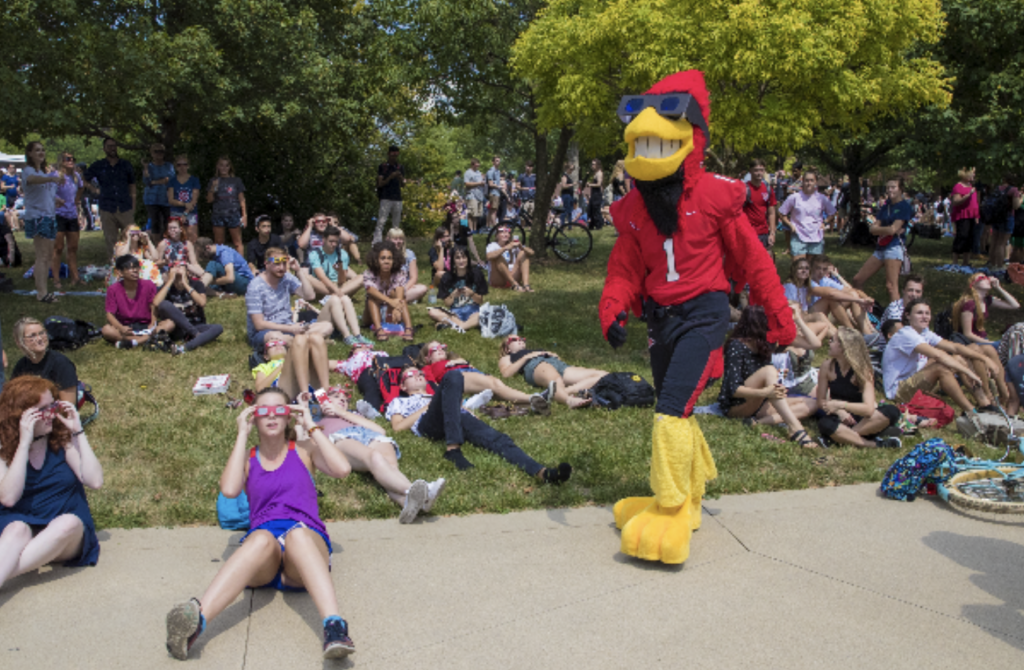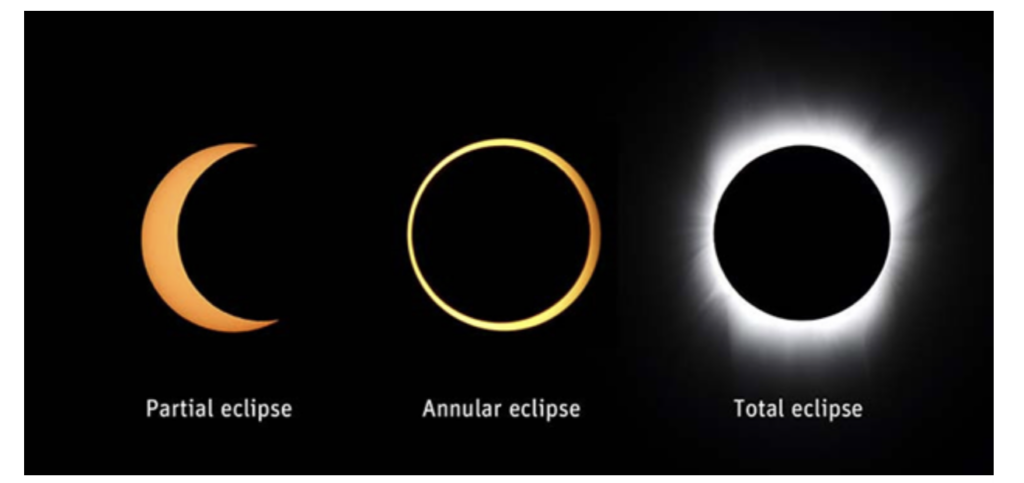By Ball State University’s Charles W. Brown Planetarium—
MUNCIE, IN—Indiana residents will have the rare opportunity to view two solar eclipses in the upcoming months. You may have heard about the total solar eclipse coming to most Indiana cities in April 2024. There is also a partial solar eclipse happening during the day on October 14 throughout all of Indiana. The last partial solar eclipse visible from Indiana cities, such as Muncie, was back in 2017. This is recent compared to the last total solar eclipse for the Muncie area which happened on July 29, 957—over 1,000 years ago. The last total solar eclipse to touch Indiana soil in general was back in 1869. The Hoosier college towns of Bloomington, Greencastle, Terre Haute, and Evansville all enjoyed totality that year.
The upcoming solar eclipses happening in Indiana are experiences you won’t want to miss. “Solar eclipses are relatively rare experiences for individuals to enjoy. They encourage people to get up, go outdoors, and experience nature in a new way,” Ball State University’s Charles W. Brown Planetarium Director, Dayna Thompson, boasts. “In addition to being an example of astronomy in action, eclipses have intrigued artists, writers, creators, and thinkers of all types. They are events that inspire.”
This is perhaps why you may have heard about that total solar eclipse coming to North America in April 2024. Indiana cities will have the chance to view the total solar eclipse from inside what’s referred to as the “path of totality.”

Ball State students, community guests, and Charlie Cardinal wear their eclipse glasses for the 2017 partial eclipse viewing party. The community will experience a similar environment on campus at the October 14, 2023 partial eclipse party. Photo by Ball State University
What’s the difference between a partial solar eclipse and a total solar eclipse? Quite a lot. Thompson explains, “both occur when the Moon temporarily covers the face of the Sun. With a partial solar eclipse, the Sun is only ever partially blocked by the Moon and you need to use a proper solar filter or a projection device to view the eclipse. This is the type of eclipse that people will see from Indiana on October 14, 2023, weather pending of course. However, during a total solar eclipse, there is a short window when the Sun’s face is completely blocked by the Moon. During the few minutes when the Sun’s disk is completely blocked, and only during this time, the Sun’s beautiful outer atmosphere is visible without any eye protection—an amazing experience for anyone fortunate to see it.”
Ball State University’s Charles W. Brown Planetarium and Office of Community Engagement are starting the celebrations early for this once-in-a-lifetime April 2024 total solar eclipse by hosting a special event during next month’s October 14 partial solar eclipse.
For the October eclipse, there will be a Partial Solar Eclipse Community Block Party from 11:30 a.m. – 2:30 p.m. on the Ball State University Quad that will highlight family activities including music, an inflatable obstacle course, hands-on science and art activities, solar telescopes, free solar eclipse glasses while supplies last, and more.
Bianca Sulanke, Project Coordinator in the Office of Community Engagement and co-organizer for the Block Party, says the event will be “a fun event that is an opportunity to gather and share a special educational experience with our friends and neighbors from all over the community.”
The partial solar eclipse on October 14 begins shortly after the block party starts at 11:41 a.m., and the Moon will continue to block out more of the Sun until maximum occurs at 1:03 p.m. The partial solar eclipse will then end at 2:28 p.m.

October 2023’s partial and annular solar eclipses always need protective eyewear to see directly. A total solar eclipse, like the one visible by much of Indiana in April 2024, can briefly be viewed without any eye protection. Photo by Exploratorium
Thompson explains, “the eclipse on October 14 is actually an annular solar eclipse, when the Moon is a bit farther away from the Earth in its orbit than it sometimes is during eclipses, making it appear smaller than the Sun in the sky. Therefore, for anyone in what is known as the ‘path of annularity,’ the Moon does not block the entire face of the Sun and instead creates a ring of sunlight around the Moon visible if viewed through the proper solar filter.”
However, we will not see the full annular event in Indiana, as we are not in the path of annularity. Nevertheless, the Moon will block 42% of the Sun’s disk at Ball State’s Partial Solar Eclipse Community Block Party and can be viewed using solar filters like the free eclipse glasses that the Brown Planetarium has been distributing at their public programs.
“Having a partial solar eclipse just 6 months before the next eclipse in your area is a wonderful and unique experience. The October block party will really help get us excited for the total eclipse on April 8, 2024—which will be a completely different and amazing experience for our community!” Sulanke exclaims.
The planetarium at Ball State has been presenting free planetarium shows about eclipses for decades, adding more options to the show schedule since the 2017 solar eclipse. “With the current educational resources available on solar eclipses and Sun safety, including what we do here at Ball State, the public is far better equipped to safely view these exciting events,” Thompson expands. “It was once common to keep people in doors—they were even told to hide under tables—during solar eclipses. These outdated practices are fortunately rare nowadays. Solar eclipses, especially total solar eclipses, are memorable. People travel hundreds and thousands of miles to see them. Having one come to your home town is something to get excited about. I hope people make the effort to safely see both upcoming solar eclipses—and I hope they come to our planetarium events to learn how to be safe while doing so!”
Related article below.
Charles W. Brown Planetarium Fall 2023 (Aug.- Dec.) Free Show Schedule



